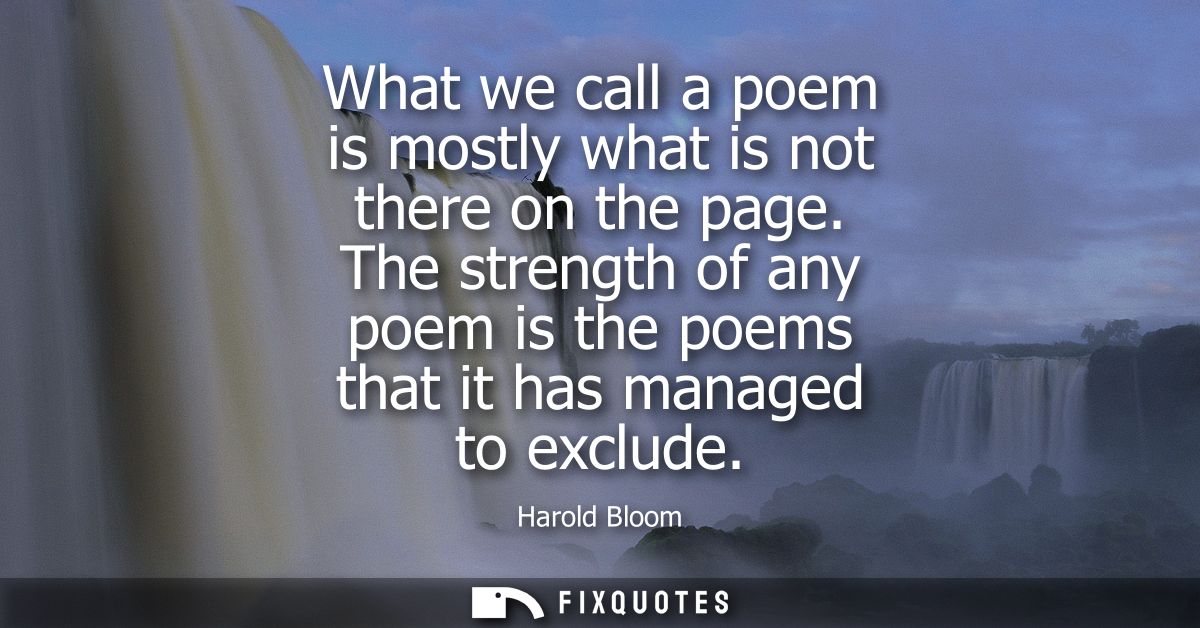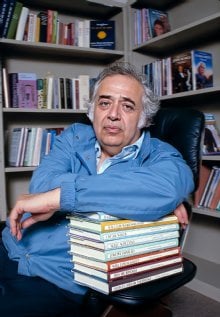"What we call a poem is mostly what is not there on the page. The strength of any poem is the poems that it has managed to exclude"
About this Quote
Harold Bloom’s assertion that what we consider a poem is largely “what is not there on the page” draws attention to the power of absence and restraint in poetic creation. A poem’s effectiveness is often measured not solely by the words present, but by what is left unsaid, unfixed, and hovering beyond the boundary of language. Language can only gesture toward meaning; its true strength lies in its ability to evoke, to suggest, and to imply, rather than to exhaustively explain. The white space, the silences, and the unsaid are lofty co-creators with the poet.
Every poem is an act of selection, of both inclusion and, more importantly, exclusion. In shaping a poem, the poet makes choices about what to omit. Each line, stanza, and image that remains has survived the crucible of the poet’s rigorous self-editing. What is left out helps define what is left in; each absence deepens the resonance of every presence. So much of the poem’s force, tension, and emotional density arise from these meaningful omissions. The unsaid words, the suppressed narratives, the possibilities unrealized, all conspire to produce a sense of depth and multiplicity, encouraging the reader to lean forward, to read between the lines, to bring their own meanings to the work.
Bloom suggests that an effective poem manages to “exclude” other poems, other verbal pathways, other concepts, alternate expressions. The richness of poetry stems from its capacity to evoke entire worlds with brevity, leaving the rest tantalizingly out of reach. The artistry lies not in verbosity but in distilled expression, a discipline of saying otherwise and yet more through absence. What a poem excludes is not only clutter, but a multitude of alternate poetic possibilities, ensuring the one poem presented on the page is dense with implication and significance, filled with silence and shadow, inviting every reader to complete it anew.
More details
About the Author

